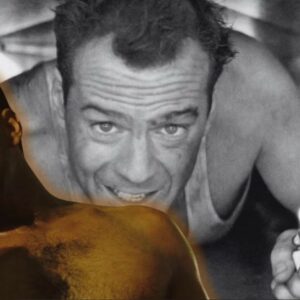Kelly Clarkson’s journey from the humble beginnings of “American Idol” to the seasoned performer she is today is a testament to her growth as an artist and individual. Her career, marked by raw talent, vulnerability, and an unwavering commitment to self-expression, has captivated audiences across the world. Clarkson’s stage presence has evolved dramatically over the years, from the nervous energy of her early performances to the confident and commanding presence she holds today.
Early Career: The Beginning of Stage Presence
When Kelly Clarkson first stepped onto the “American Idol” stage in 2002, she was a fresh-faced 20-year-old with a powerful voice but an uncertain stage presence. The reality TV singing competition, which aimed to crown America’s next pop star, was the perfect platform for Clarkson to showcase her immense vocal abilities. However, despite her undeniable talent, Clarkson initially struggled with the nerves and anxiety that come with being in the spotlight. Her early performances were marked by a palpable sense of vulnerability, a stark contrast to the polished performers who had been rehearsing their craft for years.
In her very first audition, Clarkson delivered an unexpected rendition of “At Last” by Etta James. While her vocal ability was immediately evident, her physicality was more reserved. She often looked down at the floor, clearly overwhelmed by the intensity of the moment. The audience, however, could sense the rawness of her performance. There was something incredibly genuine about her presence that drew them in, despite her nervous energy.
What stood out most about Clarkson during her early days on “American Idol” was her authenticity. While other contestants often tried to fit into a mold of what a star should look and act like, Clarkson was unapologetically herself. Whether she was singing pop ballads, rock anthems, or more country-inspired tunes, she remained true to her personal style. The audience responded to that honesty. Clarkson’s early nervousness became a part of her charm, and people rooted for her not just because of her talent, but because of her realness.
By the time she won “American Idol,” it was clear that Clarkson was a star on the rise. The confidence she had gained from the competition would serve as the foundation for her career, but it was evident that her stage presence was still a work in progress. However, there was no denying that she had a connection with the audience that few others had—an intangible, magnetic quality that came from her vulnerability and emotional honesty.
Growth in Confidence and Vocal Control
As Kelly Clarkson’s career began to take shape post-“American Idol,” it was clear that she was evolving not only as a singer but also as a performer. The shy, uncertain young woman who once gripped the microphone tightly and looked down at the stage was starting to emerge as a confident, charismatic artist. The transformation was gradual, but over the years, Clarkson’s stage presence grew in complexity, power, and confidence.
One of the key areas where Clarkson experienced significant growth was in her vocal technique. Her debut album, Thankful (2003), was a mixture of pop and soul ballads that showcased her extraordinary vocal range. Yet, even on the album’s standout tracks like “A Moment Like This,” Clarkson’s voice sometimes felt constrained, as though she was still figuring out how to navigate the demands of the pop world. There was no doubt she had talent, but it was evident that she was still learning to control and harness her voice in a way that would allow her to push past her limits.
By the time she released her second album, Breakaway (2004), Clarkson’s voice had matured significantly. The album marked a departure from the more cookie-cutter pop sound of Thankful and introduced a more rock-influenced, independent vibe. Tracks like “Since U Been Gone” and “Behind These Hazel Eyes” displayed not only her vocal power but also her increasing ability to command the stage with her delivery. In these songs, Clarkson wasn’t just singing; she was inhabiting the lyrics, delivering them with conviction and emotion that made every word feel personal.
Live performances around this time also began to reflect her increasing comfort on stage. Clarkson’s early performances, though impressive vocally, were often hampered by her nervousness. She would stand still, clutching the microphone, and occasionally engage with the audience but mostly remained focused on the song itself. As she progressed, her performances became more dynamic. She began to move more freely on stage, engaging the audience not only with her voice but with her physicality. She learned how to use the stage as an extension of her voice, making her concerts an immersive experience.
Her vocal control became even more refined with the release of her third album, My December (2007). While Breakaway had been a commercial success, My December was a more personal, introspective record that allowed Clarkson to showcase a deeper emotional range. Live shows during this period were a reflection of her growing confidence as an artist. Clarkson was no longer just singing; she was telling a story, and every note was carefully crafted to draw the audience into her world. Her once-shy demeanor had been replaced with a more self-assured and commanding stage presence, allowing her to emotionally connect with her audience on a deeper level.
Embracing Musical Diversity and Experimentation
As Kelly Clarkson continued to grow as an artist, she began to push the boundaries of her musical identity. Rather than staying within the confines of a particular genre, Clarkson became known for her willingness to experiment with different musical styles, from pop and rock to country and even a touch of blues. This musical diversity became one of the hallmarks of her career, and it had a profound impact on her stage presence.
Clarkson’s ability to cross genres and explore new sounds was reflected in her live performances. Early on, she had been somewhat constrained by the expectations of pop stardom, but as her career progressed, she began to experiment more with her sound and her stage persona. Her performances became more unpredictable, with Clarkson seamlessly transitioning between genres. She could belt out a powerful rock anthem one moment and then switch to a tender country ballad the next, all while maintaining her audience’s engagement.
During her Stronger (2011) era, Clarkson’s ability to adapt her stage presence to different musical genres became especially evident. Her ability to engage with the audience increased, and her performances became more emotionally charged. Clarkson was no longer just singing songs; she was immersing herself in them, bringing out the emotional core of each piece. Whether she was performing the anthemic “Stronger (What Doesn’t Kill You)” or the heartfelt “Already Gone,” Clarkson’s stage presence was marked by a deeper emotional engagement that went beyond the music itself.
Her ability to connect with her audience also became more apparent as she embraced her role as an entertainer. Clarkson’s banter with the crowd, her humorous anecdotes, and her ability to make her audience feel like they were part of the performance were all key elements of her growth as a live performer. Her on-stage personality was a mix of humor, vulnerability, and charisma, and it was clear that she was no longer just a pop star following a formula—she was an artist in control of her own narrative.
The Impact of Personal Life and Maturity
As Clarkson’s career continued, so did her personal evolution. Her experiences in love, heartbreak, and motherhood began to shape her approach to performing in ways that made her even more relatable to her fans. By the time she entered her thirties, Clarkson had matured both personally and professionally, and this maturity was reflected in her performances. She was no longer just a young woman with a big voice; she was a seasoned artist who had lived through enough to infuse her songs with genuine emotional depth.
The breakup with her first husband, Brandon Blackstock, marked a significant turning point in Clarkson’s life, and her music began to reflect the complexity of this experience. Songs like “Because of You” and “Piece by Piece” had always been heartfelt, but after her divorce, Clarkson’s live performances of these tracks took on a new emotional weight. Her vulnerability became a powerful tool in her performances, allowing her to connect with fans who were going through their own personal struggles.
Her live shows during this period also reflected a more sophisticated, polished stage presence. Clarkson had mastered the art of balancing her powerful vocals with the intimacy of her songs. Her performances were no longer about the spectacle of the stage; they were about creating an emotional connection with the audience, allowing them to feel her pain, joy, and triumph. Her personal growth had allowed her to become more in tune with her audience, making her performances feel more like a shared experience rather than just a one-sided show.
Current Performances: A Masterful Balance of Voice, Charisma, and Showmanship
Today, Kelly Clarkson stands as one of the most versatile and dynamic performers in the industry. She has evolved from the nervous, shy contestant on “American Idol” into a seasoned artist who effortlessly blends her incredible vocal range with a magnetic stage presence. Clarkson’s ability to balance her powerhouse voice with a captivating personality has made her concerts some of the most sought-after experiences in the music industry.
At the heart of Clarkson’s current performances is her ability to connect with her audience on a deep, emotional level. She has perfected the art of balancing humor, vulnerability, and raw vocal power. Whether she’s cracking jokes with the crowd, sharing personal stories, or belting out one of her iconic hits, Clarkson’s presence on stage is electric. Her live shows have become a masterclass in showmanship, and her ability to engage with her fans has only grown stronger with time.
Clarkson’s ability to effortlessly transition between high-energy pop anthems and heartfelt ballads is one of the reasons her live shows are so compelling. She no longer needs to rely on choreography or flashy visuals to captivate the audience; her voice and her presence are enough to keep them on the edge of their seats. Clarkson’s growth as an artist and performer has allowed her to find a perfect balance between her vocal prowess and her ability to connect with her audience, creating an unforgettable live experience every time.
In conclusion, Kelly Clarkson’s journey as a performer has been marked by incredible growth, both in her vocal technique and in her stage presence. From the uncertain, nervous contestant on “American Idol” to the seasoned, confident artist of today, Clarkson has consistently used her raw talent, emotional depth, and unrelenting authenticity to connect with her audience. As she continues to evolve as an artist, there’s no doubt that her stage presence will only become more captivating, ensuring that Kelly Clarkson remains one of the most beloved and powerful performers of her generation.





